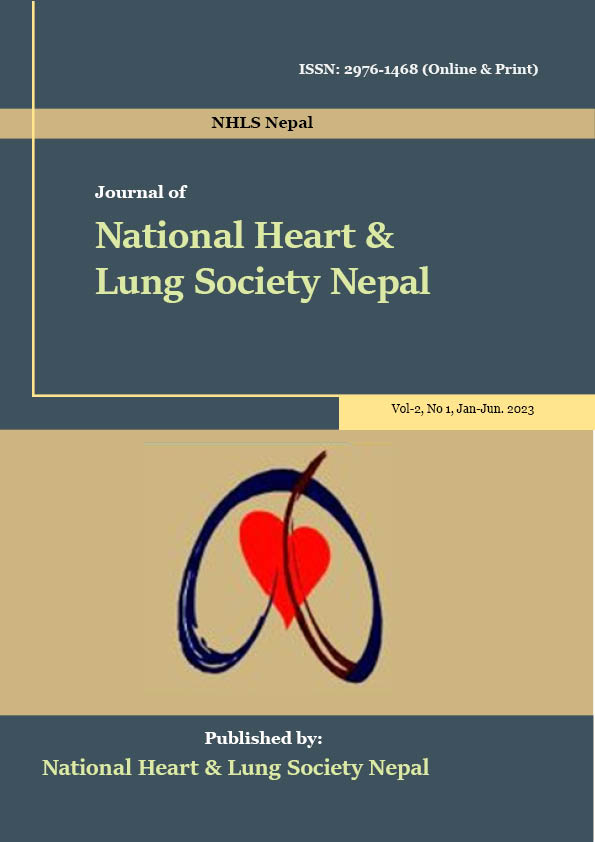Radiation Dose Measurement during CT Abdomen Examination of Adult Patients: A Cross-Sectional Study
DOI:
https://doi.org/10.3126/jnhls.v2i1.56204Keywords:
Computed Tomography, CTDI, DLP, ED, radiation doseAbstract
Background: Computed tomography (CT) has become a routine imaging modality for many clinical applications due to its wide availability, minimally invasiveness, short scan time, excellent anatomical resolution, and high diagnostic value. The radiation dose to patients from CT examinations is the highest contributor to diagnostic medical exposure, which is a growing public concern. The aim of this study was to measure radiation doses for abdominal CT examinations in adult patients and compared them to international standard dose values.
Methods: A cross-sectional study was conducted on 92 adult patients with abdomen CT scans using a 16-slice computed tomography scanner at the department of Radiodiagnosis & Medical Imaging, UCMS-TH, Bhairahawa, Nepal from August 2018 to January 2019. The radiation doses were measured by convenient techniques: volumetric computed tomography dose index (CTDIvol), dose length product (DLP) & effective dose (ED) and data were analyzed using SPSS version 20.
Results: The mean BMI of the study participants was 23.92±4.29 kg/m2. The mean values of contrast-enhanced scan CTDIvol, DLP, and an ED in our study were 7.31 mGy, 421.46 mGy.cm and 6.31 mSv respectively which is very low as compared to European Guidelines (EG) & International Atomic Energy Agency (IAEA). There was a statistically significant association between patient BMI with CTDIvol, DLP and ED during non-contrast, contrast-enhanced and delayed scans.
Conclusion: The CTDIvol, DLP, and ED were lower than the European guidelines and IAEA standards. Toward preventing health effects from ionizing radiation, our study follows public concerns and minimizes radiation doses.




